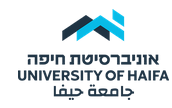Dead Sea Transform historical earthquakes analyses
The project enhance our understanding of the seismic history and associated hazards along the Dead Sea Transform (DST), a tectonic fault system stretching from the Red Sea to southeastern Turkey. By integrating historical seismology, paleoseismology, archaeoseismology and GIScience approaches, this initiative will address gaps in knowledge about seismic activity and its effects across millennia.
The project has several objectives:
Refine existing records of past seismic events associated with the DST, focusing on improving the accuracy of timelines, spatial patterns, and magnitudes. Through critical review and synthesis of historical reports, this work will correct inaccuracies and establish a comprehensive seismic history for the region.
Patterns of seismic activity, including periods of clustering and quiescence, will be investigated. By linking seismic activity to specific fault structures and stress cycles, the project will illuminate the dynamic behavior of the DST across time and space.
Using GIS tools, the project will analyze damage reports from hundreds of localities affected by historical earthquakes. This analysis will identify areas of heightened vulnerability, influenced by factors such as proximity to faults and local geological conditions.
Combining historical accounts with archaeological and paleoseismic findings, the project will construct a detailed record of seismic cycles, including evidence from lake sediments, rockfalls, and ancient fault ruptures. This approach will bridge gaps in data for periods lacking written records.
The project will examine the impact of earthquakes on ancient societies in the Levant. By studying responses such as shifts in settlement patterns, architectural adaptations, and cultural narratives, the research will explore how communities endured and adapted to seismic hazards.
- By offering refined estimates of earthquake recurrence intervals and analyzing historical damage patterns, the project will provide actionable insights for urban planning and disaster preparedness in Israel and surrounding regions.
This initiative brings together interdisciplinary approaches to advance our understanding of seismic processes, their effects on human societies, and strategies for risk mitigation, while fostering data accessibility and collaboration for future research.



